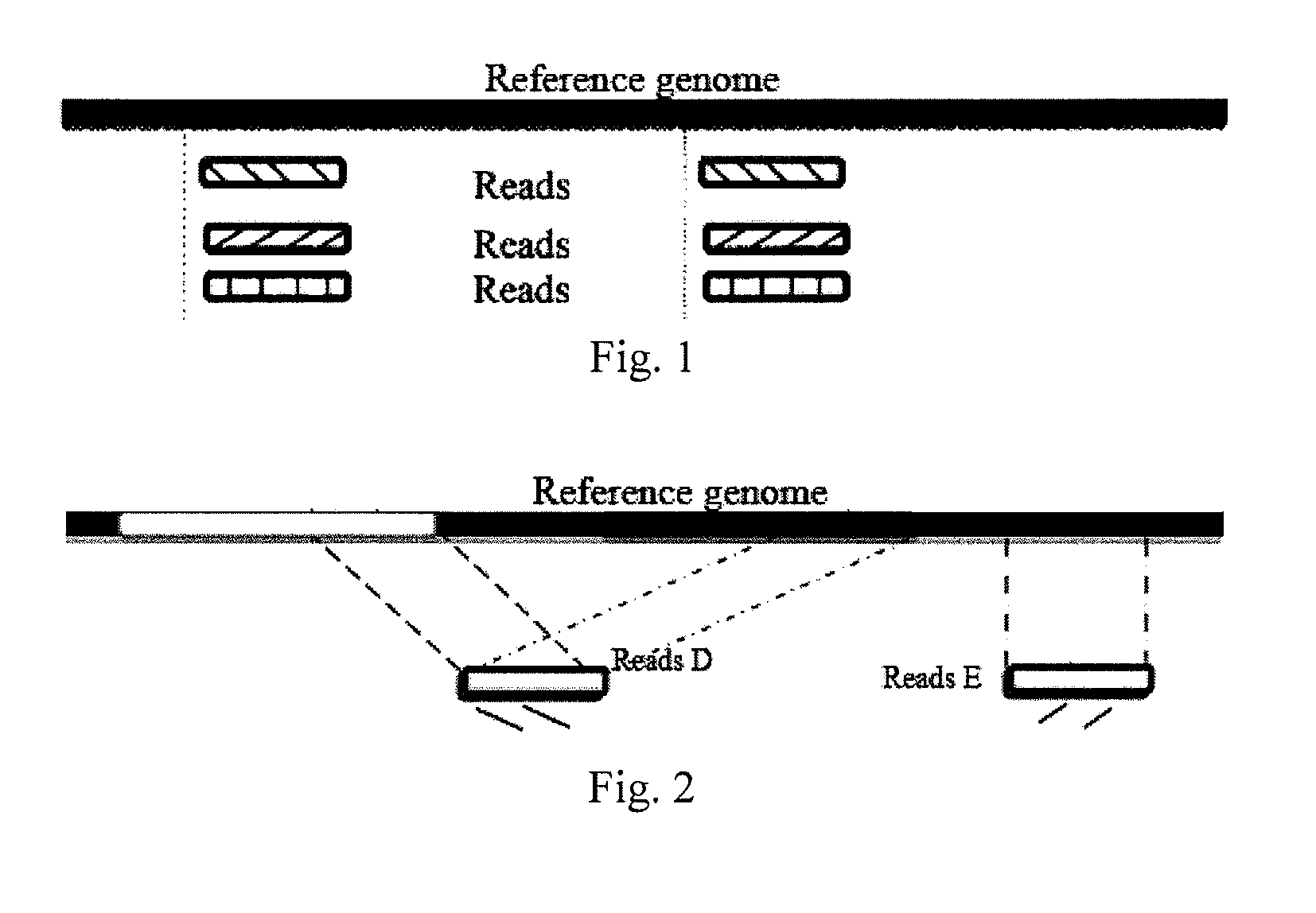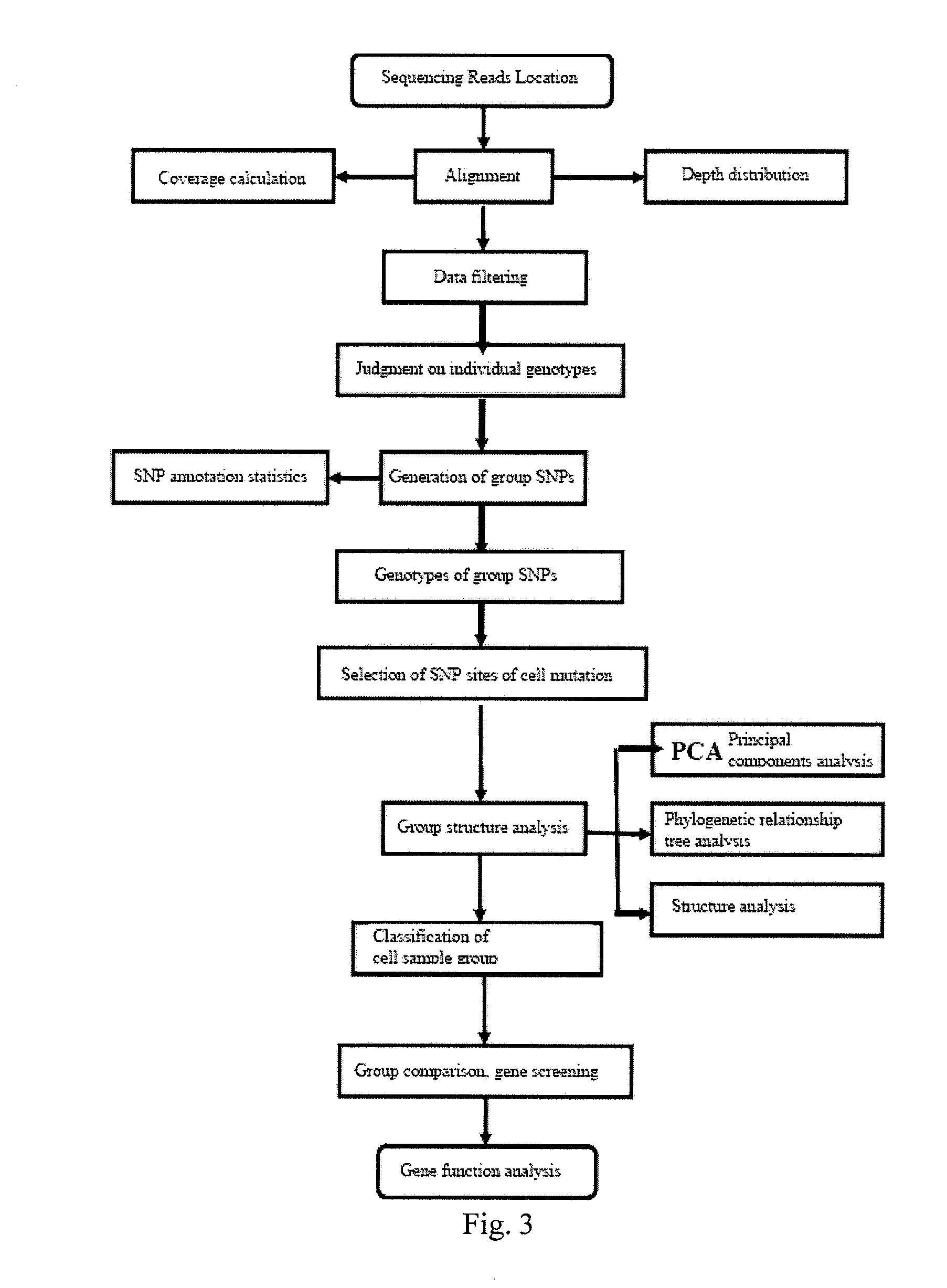Single cell classification method, gene screening method and device thereof
a single cell and gene technology, applied in the field of bioinformatics, can solve the problems of low screening detection accuracy, high cytotoxicity, and high cytotoxicity of subgroup classification, and achieve the effect of increasing the accuracy of cell subgroup classification and increasing the accuracy of cell screening
- Summary
- Abstract
- Description
- Claims
- Application Information
AI Technical Summary
Benefits of technology
Problems solved by technology
Method used
Image
Examples
embodiment 1
Single Renal Cancer Cell Classification
[0151]1-1. Location of Reads
[0152]The result of Reads of each single cell sample obtained by sequencing was aligned to the sequence of a reference genome (the human genome HG18) with the SOAPaligner alignmetn software (soap.genomics.org.cn / soapaligner.html). Since human SNPs were two thousandths and the length of Reads was 100 bp, during the alignment by SOAP, the parameters were set that each piece of Reads had a maximum of 3 mismatches and Gap was not allowed, so as to ensure that the positions of Reads that could be mapped on were accurate.
[0153]1-2. Basic Data Statistics
[0154]According to the result of the above-mentioned alignment, the sequencing depth and coverage and other results were calculated for each sample (a single cell or tissue) relative to the sequence of the reference genome, and when whole genome sequencing was obtained by statistics and the mean depth was around 3×, due to the presence of certain bias of PCR amplification, t...
embodiment 2
Single Leukemia Cell Classification and Screening
[0224]2-1. Location of Reads
[0225]Exome sequencing of a 30× depth was performed on each single cancer cell, the obtained result of reads was aligned to the sequence of a reference genome (the human genome HG18) using the SOAPaligner 2.0 alignment software. Because human SNPs account for two thousandths and the read length of Reads was about 100 bp, during SOAP alignment, we set that each piece of Reads had at most 2 mismatches and Gap was not allowed to occur, so as to ensure the accuracy of the alignment of Reads with the reference genome.
[0226]2-2. Basic Data Statistics
[0227]A total of 53 cancer cells and 8 oral epithelial cells (normal cells) were sequenced. Table 5 is the numerical value information of the exome sequencing coverage and depth of each cell sample.
TABLE 5The exome sequencing coverage and depth of each cell sampleCell sampleCoverageDepthET-560.9543.00ET-520.9441.00ET-600.9439.00ET-740.9434.00ET-660.9333.00ET-690.9230....
PUM
| Property | Measurement | Unit |
|---|---|---|
| Fraction | aaaaa | aaaaa |
Abstract
Description
Claims
Application Information
 Login to View More
Login to View More - R&D
- Intellectual Property
- Life Sciences
- Materials
- Tech Scout
- Unparalleled Data Quality
- Higher Quality Content
- 60% Fewer Hallucinations
Browse by: Latest US Patents, China's latest patents, Technical Efficacy Thesaurus, Application Domain, Technology Topic, Popular Technical Reports.
© 2025 PatSnap. All rights reserved.Legal|Privacy policy|Modern Slavery Act Transparency Statement|Sitemap|About US| Contact US: help@patsnap.com



